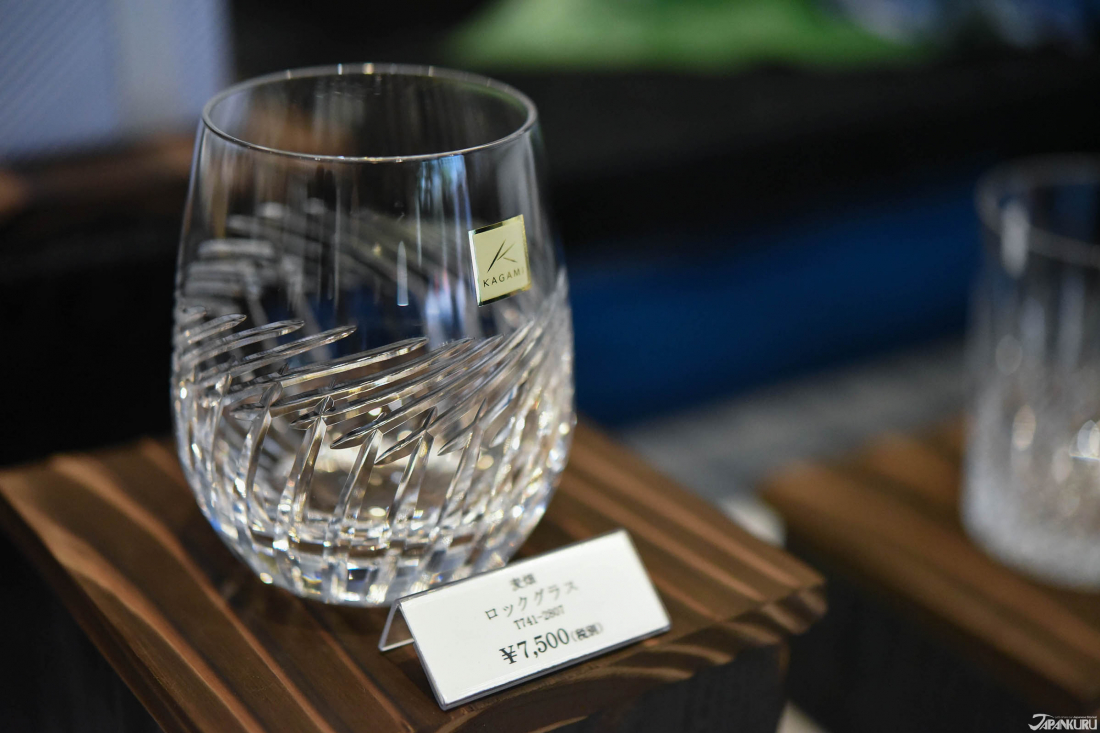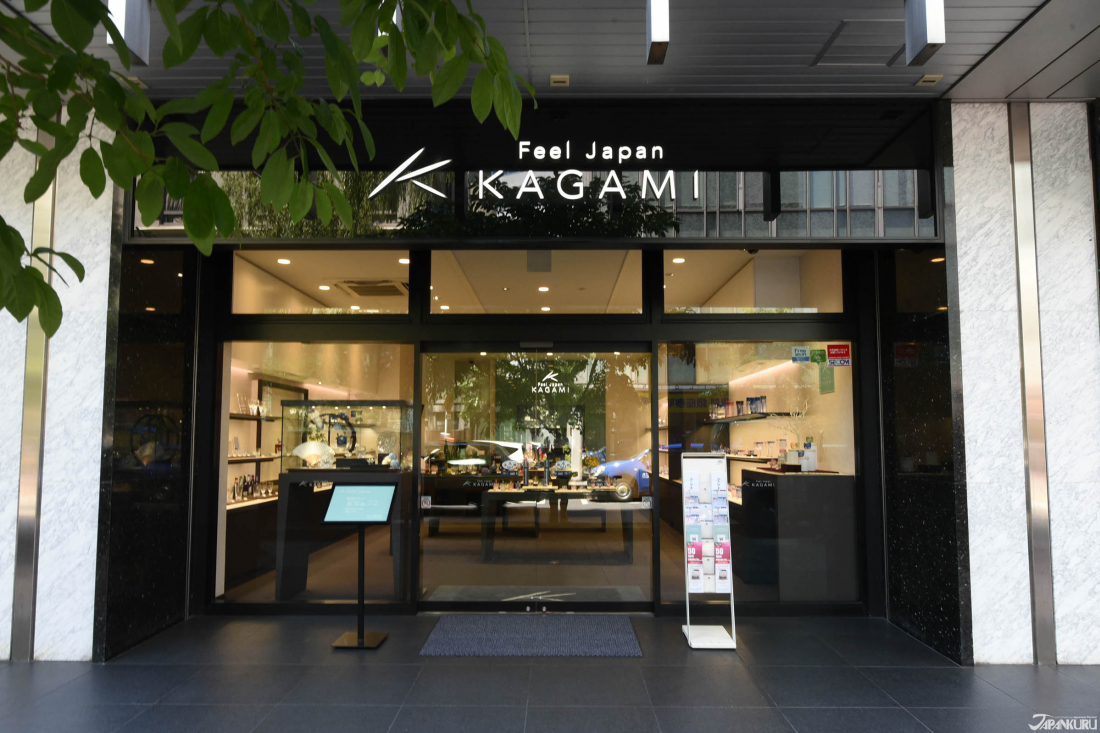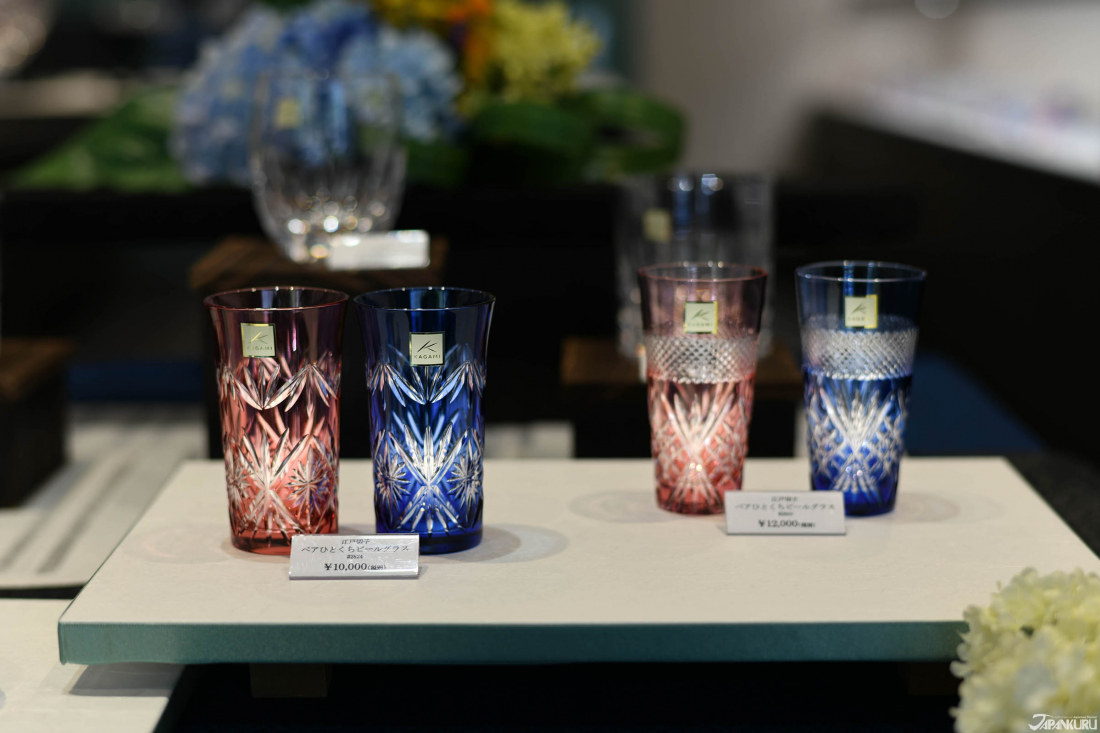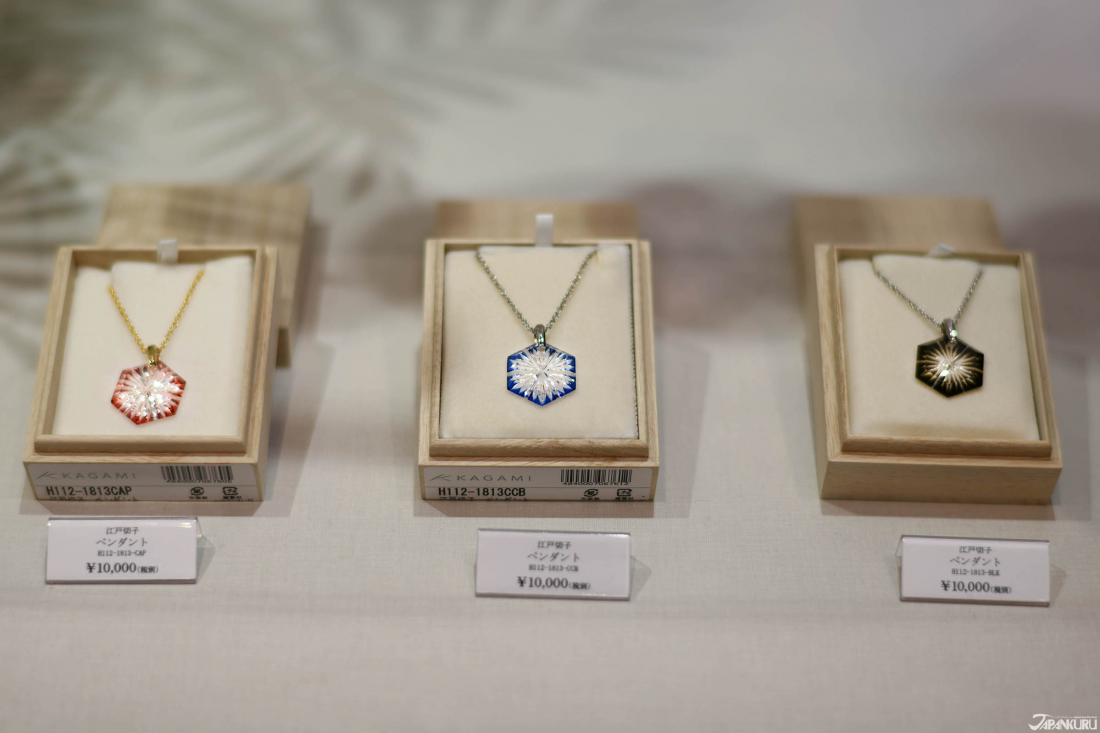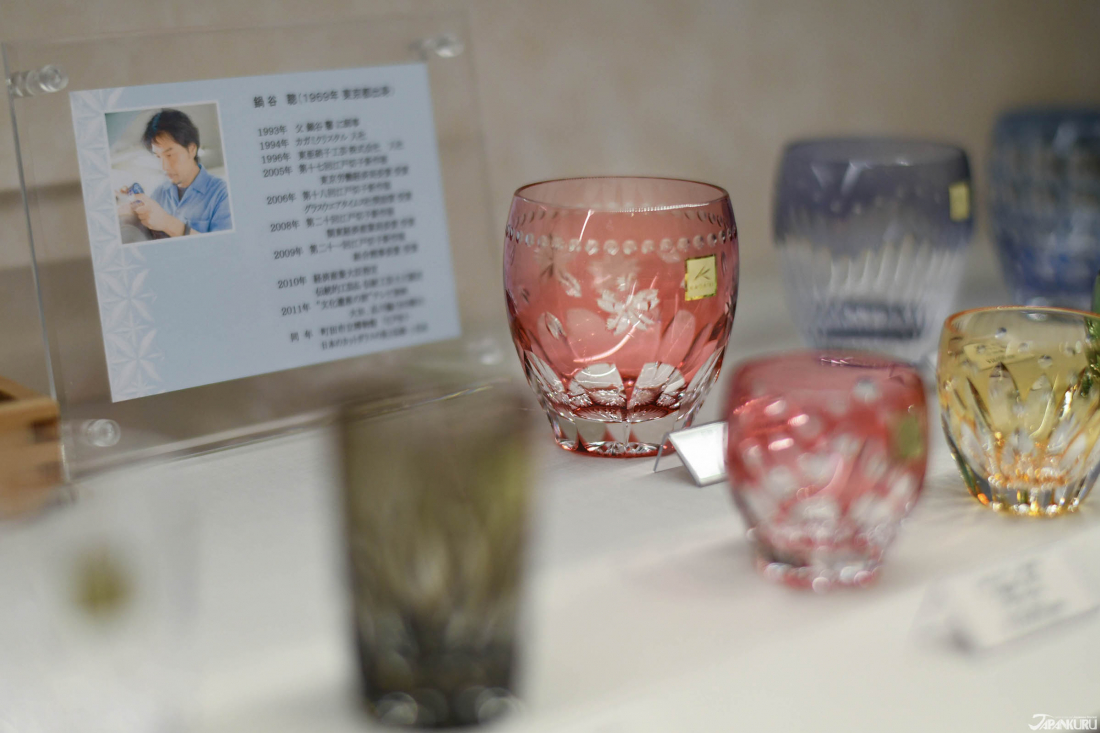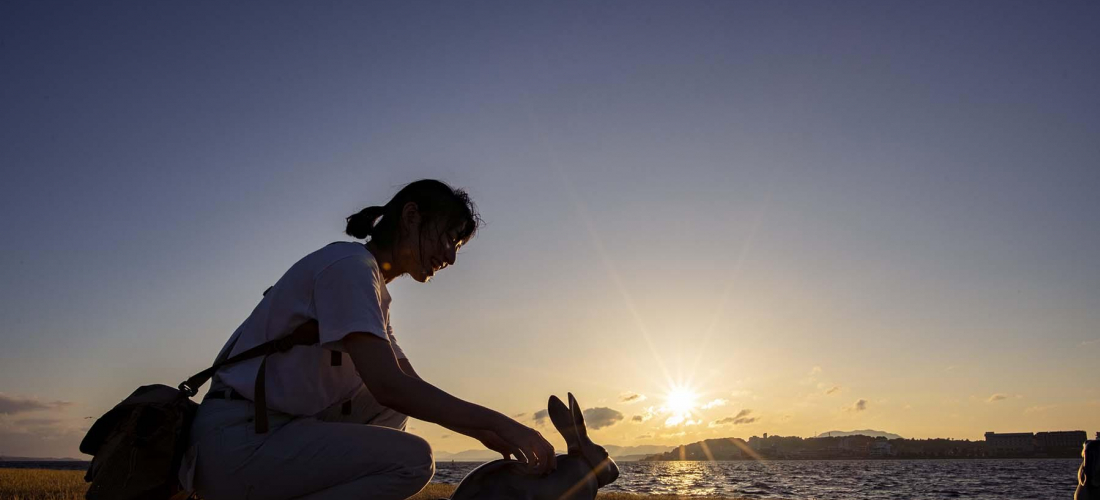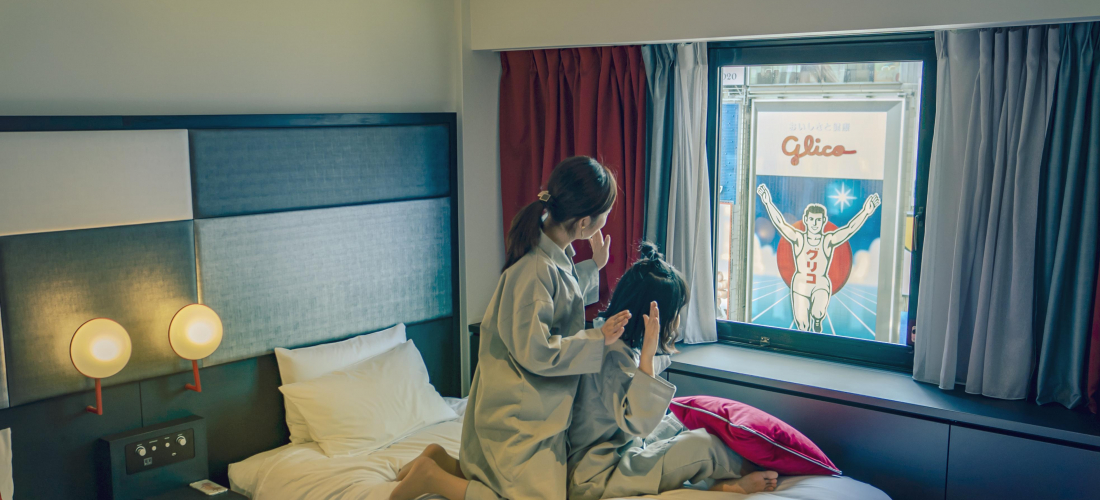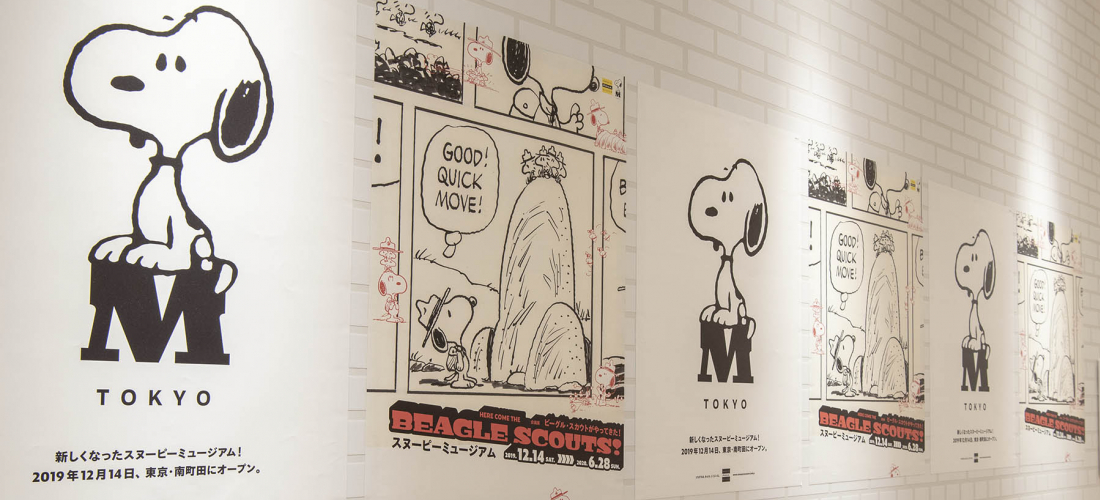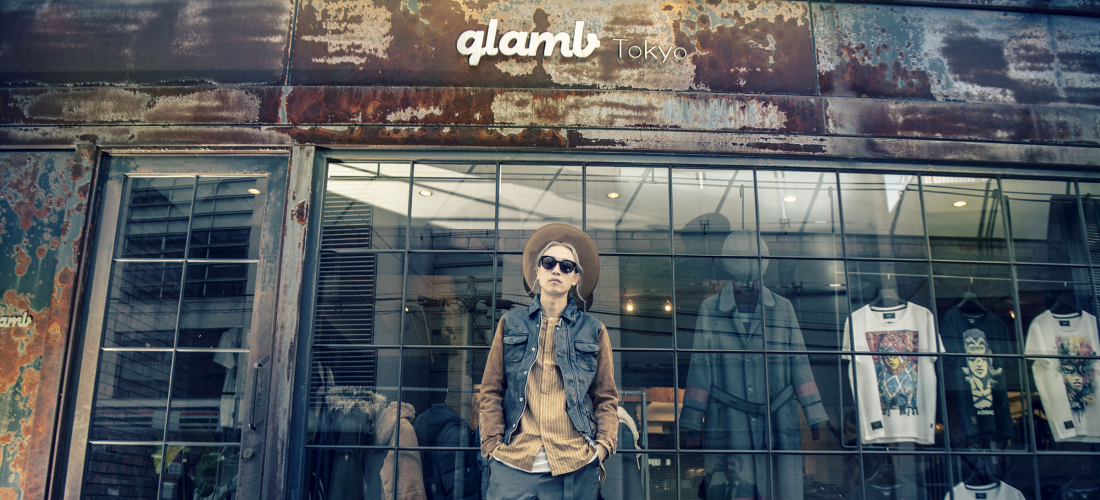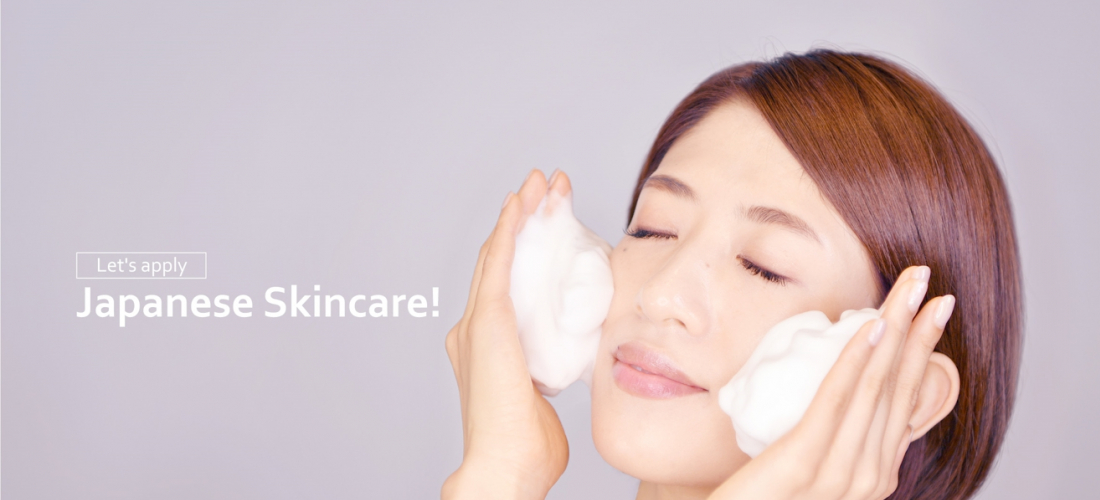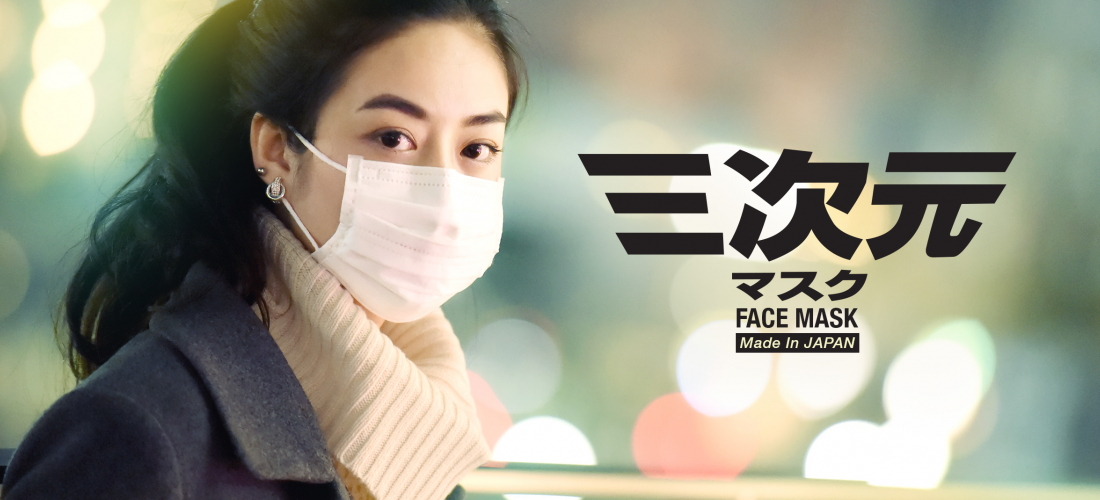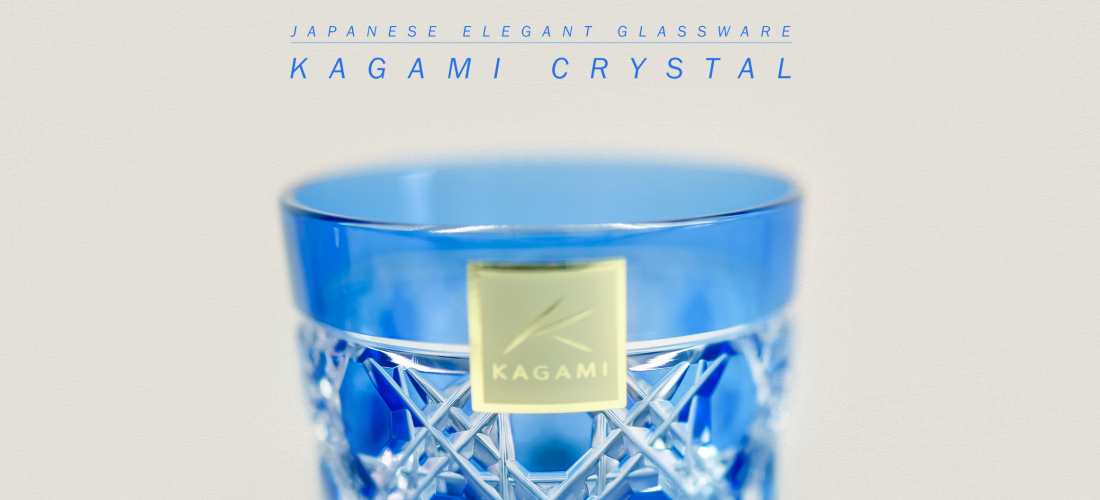
Le travail du verre d’Edo Kiriko est un des plus beaux arts traditionnels du Japon. Vous pourrez admirer l’un des meilleurs artisanat japonais dans la boutique tokyoïte Kagami Crystal.
Le premier atelier de verre en cristal du Japon depuis 1934
Adoré par l'agence impériale du Japon
La laque? le bambou? la menuiserie? l'origami?
Eh bien, vous n'avez pas tort, mais cette fois-ci, JAPANKURU aimerait vous présenter une partie de l'artisanat du Pays du soleil levant que vous n'avez jamais vu jusqu'à présent:
Nous parlons bien du verre!
Croyez-le ou non, la relation du Japon avec le verre date du troisième siècle (période Yayoi)
mais ce n'est que durant la période Edo (1615-1868) que l'art du verre que nous connaissons aujourd'hui
s'est véritablement implanté.
Voilà pourquoi nous aimerions aujourd'hui vous faire partager le "Edo kiriko"
et vous montrer où vous en procurer: dans la boutique la plus populaire du Japon à Ginza, Tokyo.
Vous trouverez deux types de verres dans la boutique Kagami Crystal.
Le verre en cristal et l'Edo kiriko.
Le verre en cristal consiste en un amoncellement de matériaux pures qui formeront un verre transparent.
L'Edo kiriko, qui est le principal artisanat venu de Tokyo, est taillé dans le verre,
dont les coupures, fines et méticuleuses,
ne peuvent être produites que par les mains d'artisans japonais.
Mais comment arrivent-ils à taillé de si délicates oeuvres d'art?
Nous y viendrons un peu plus tard, mais tout d'abord, il est important de savoir ce que "coupure" désigne.
Les "coupures" font références au verre qui a été taillé en disques faits d'émeraudes
ou autres pierres précieuses.
C'est ainsi que des motifs apparaissent sur celui-ci.
Ces formes produiront alors différents effets visuels en fonction de l'angle et de la lumière
au travers d'un procédé délicat.
A l'origine, on utilisait seulement du verre transparent mais des verres colorés tels que le jaune, le rouge ou le bleu sont progressivement apparus. Ce qui fait du Edo Kiriko unique sont ses motifs fins, simples mais sublimes, qui ont été taillés à la main. Il sont d'une certaines manières similaires à ceux qu'on voit sur les kimono car ils représentent généralement des crysanthèmes, des feuilles de bambous ou des formes géométriques.
C'est en 1985 que l'Edo Kiriko a été désigné comme un artisanat de Tokyo et en 2002 qu'il est reconnu comme un art japonais! Il est facile de comprendre pourquoi! Les disques de verres amoncelés sur plusieurs couches sont tout à fait étonnants.
"Kiriko" (切子) veut dire "facette" en japonais, et désigne les multitudes de motifs qui sont gravés sur la surface du verre.
Quel est le procédé utilisé pour tailler l'Edo Kiriko?
Premièrement, sachez qu'il y a une très large panoplie de roues pour tailler le verre Edo Kiriko!
Waridashi (割り出し) ou Sumitsuke – permet d'utiliser de l'encre afin de dessiner les contours des motifs qui seront taillés dans le verre.
Arazuri (粗刷) – sert à graver les premiers contours dessinés. Certains utilisent un mélange d'émeri et d'eau afin de couper dans le verre.
Sanbankake (三番掛け) – applique une poudre d'émeri pour des coupures plus détaillées.
Ishikake (石掛) – est une pierre à aiguiser qui permet de lisser le verre.
Migaki (磨き) – utilisé pour polir l'oeuvre d'art.
Bafukake (バフ掛け) – utilisé pour lustrer le verre.
est ce qui fait de mieux dans l'industrie japonaise.
Simple et élégant.
Kagami Crystal a installé son premier atelier en 1934 au Japon. Le verre en cristal et l'Edo Kiriko produit par Kagami Crystal a non seulement gagné de nombreux prix dans le monde entier, mais est aussi apprécié et utilisé par la famille impériale ou le ministre des affaires étrangères. A l'intérieur de la boutique, vous y verrez même une bouteille de parfum WHITE ROSE de SHISEIDO ou une bouteille commémorative de whisky Suntory.
🍶Des verres à saké froid
Pour beaucoup, le Japon= saké. Alors pourquoi ne pas vous offrir quelques verres à Saké? Vous en trouverez un large gamme. Certains ressemblent à des verres à shot, d'autres, plus traditionnels, sont courts et arrondis, ou encore carrés.
🍺Verres à bière
Alors que les jours d'été approchent, les verres en cristal ou Edo Kiriko peuvent ajouter un peu d'élégance à vos soirées arrosées. Comme le marché est principalement japonais, la taille des verres à bières est légèrement plus petite. Pas d'inquiétude! Nous avons été agréablement surpris de voir que Kagami Crystal offre également une variété de verres plus larges pour leurs clients européens ou américains, ou pour ceux qui apprécient simplement la bière!
🥃Verres à whisky
Comme nous l'avons mentionné plus haut, Kagami Crystal a fabriqué une bouteille pour le whisky Suntory. Voilà pourquoi la boutique possède également une variété de verres à whisky. La taille des verres à whisky est similaire à celle des verres à bière: elle est légèrement plus petite mais Kagami Crystal propose également des verres de plus grande taille. Parfait pour ceux qui pensent que la quantité japonaise n'est pas suffisante.
Kagami Crystal ne possède pas que des produits originaux créés par son atelier, il emploie de nombreux artisans locaux.
En vous arrêtant à la boutique, vous pourrez admirer comment ces artistes expriment leur amour, leur créativité et leur détermination au travers de l'Edo Kiriko.
Grâce aux couleurs chatoyantes de ce dernier, Kagami Crystal fabrique également des colliers.
Si vous pensiez que les détails minutieux sur le verre était incroyable, attendez de voir le travail mis à l'oeuvre sur les colliers.
Vous cherchez toujours quels cadeaux ramener du Japon?
Le verre est relativement bon marché du fait d'être produit massivement et rapidement. Néanmoins, cela prend à peu près un mois pour fabriquer une simple oeuvre d'Edo Kiriko. C'est pourquoi il est facile d'imaginer à quel point Kagami Crystal représente le raffinement à la japonaise. Vous pouvez apercevoir les merveilleuses compétences de chacun des artisans rien que sur nos photos. Nous espérons que vous aurez l'occasion de visiter Kagami Crystal et peut-être même de récupérer un produit en verre Edo Kiriko. Cela reste un des meilleurs moyens de ramener chez vous l'esprit japonais, que ce soit pour vous ou pour offrir à un proche.
La boutique de Kagami Crystal est une boutique sans TVA.
Les achats de plus de 5000 yens sont exonérés pour les touristes étrangers, donc n'oubliez pas votre passeport!
Plus d'info ici!
KAGAMI CRYSTAL
・Adresse: Daiwa Ginza Bld 1st Floor, 6-2-1 Ginza, Ginza, Chuo-ku, Tokyo
Google Maps
・Accès: 5 minutes à pied depuis la gare de Tokyo Metro Ginza sortie C2 / 6 minutes à pied depuis la gare JR Yurakucho Central Exit
・Heures d'ouverture: du lundi au vendredi 11:00-19:30 / Weekends et jours fériés 11:00-18:30
💻Kagami Crystal Official Website (English)
Avez-vous un coup de coeur pour un des produits Kagami Crystal en photo dans cet article?
N'hésitez pas à laisser un commentaire ci-dessous!
Partagez votre expérience avec nous!
Restez connecté pour de nouveaux articles originaux chaque jour sur JAPANKURU.
Et ajoutez-nous sur Google+, Instagram, Facebook pour partager vos photos du Japon!
Details
NAME:Kagami Crystal
MAP
Daiwa Ginza Bld 1F, 6-2-1 Ginza, Chuo-ku, Tokyo
ACCESS:Ginza Station
COMMENT
FEATURED MEDIA
VIEW MORE 
A New Tokyo Animal Destination: Relax & Learn About the World’s Animals in Japan
#pr #japankuru #anitouch #anitouchtokyodome #capybara #capybaracafe #animalcafe #tokyotrip #japantrip #카피바라 #애니터치 #아이와가볼만한곳 #도쿄여행 #가족여행 #東京旅遊 #東京親子景點 #日本動物互動體驗 #水豚泡澡 #東京巨蛋城 #เที่ยวญี่ปุ่น2025 #ที่เที่ยวครอบครัว #สวนสัตว์ในร่ม #TokyoDomeCity #anitouchtokyodome

Shohei Ohtani Collab Developed Products & Other Japanese Drugstore Recommendations From Kowa
#pr #japankuru
#kowa #syncronkowa #japanshopping #preworkout #postworkout #tokyoshopping #japantrip #일본쇼핑 #일본이온음료 #오타니 #오타니쇼헤이 #코와 #興和 #日本必買 #日本旅遊 #運動補充能量 #運動飲品 #ช้อปปิ้งญี่ปุ่น #เครื่องดื่มออกกำลังกาย #นักกีฬา #ผลิตภัณฑ์ญี่ปุ่น #อาหารเสริมญี่ปุ่น

도쿄 근교 당일치기 여행 추천! 작은 에도라 불리는 ‘가와고에’
세이부 ‘가와고에 패스(디지털)’ 하나면 편리하게 이동 + 가성비까지 완벽하게! 필름카메라 감성 가득한 레트로 거리 길거리 먹방부터 귀여움 끝판왕 핫플&포토 스폿까지 총집합!
Looking for day trips from Tokyo? Try Kawagoe, AKA Little Edo!
Use the SEIBU KAWAGOE PASS (Digital) for easy, affordable transportation!
Check out the historic streets of Kawagoe for some great street food and plenty of picturesque retro photo ops.
#pr #japankuru #도쿄근교여행 #가와고에 #가와고에패스 #세이부패스 #기모노체험 #가와고에여행 #도쿄여행코스 #도쿄근교당일치기 #세이부가와고에패스
#tokyotrip #kawagoe #tokyodaytrip #seibukawagoepass #kimono #japantrip

Hirakata Park, Osaka: Enjoy the Classic Japanese Theme Park Experience!
#pr #japankuru #hirakatapark #amusementpark #japantrip #osakatrip #familytrip #rollercoaster #retrôvibes #枚方公園 #大阪旅遊 #關西私房景點 #日本親子旅行 #日本遊樂園 #木造雲霄飛車 #히라카타파크 #สวนสนุกฮิราคาตะพาร์ค

🍵Love Matcha? Upgrade Your Matcha Experience With Tsujiri!
・160년 전통 일본 말차 브랜드 츠지리에서 말차 덕후들이 픽한 인기템만 골라봤어요
・抹茶控的天堂!甜點、餅乾、飲品一次滿足,連伴手禮都幫你列好清單了
・ส่องมัทฉะสุดฮิต พร้อมพาเที่ยวร้านดังในอุจิ เกียวโต
#pr #japankuru #matcha #matchalover #uji #kyoto #japantrip #ujimatcha #matchalatte #matchasweets #tsujiri #말차 #말차덕후 #츠지리 #교토여행 #말차라떼 #辻利抹茶 #抹茶控 #日本抹茶 #宇治 #宇治抹茶 #日本伴手禮 #抹茶拿鐵 #抹茶甜點 #มัทฉะ #ของฝากญี่ปุ่น #ชาเขียวญี่ปุ่น #ซึจิริ #เกียวโต

・What Is Nenaito? And How Does This Sleep Care Supplement Work?
・你的睡眠保健品——認識「睡眠茶氨酸錠」
・수면 케어 서플리먼트 ‘네나이토’란?
・ผลิตภัณฑ์เสริมอาหารดูแลการนอน “Nenaito(ネナイト)” คืออะไร?
#pr #japankuru #sleepcare #japanshopping #nenaito #sleepsupplement #asahi #睡眠茶氨酸錠 #睡眠保健 #朝日 #l茶胺酸 #日本藥妝 #日本必買 #일본쇼핑 #수면 #건강하자 #네나이토 #일본영양제 #อาหารเสริมญี่ปุ่น #ช้อปปิ้งญี่ปุ่น #ร้านขายยาญี่ปุ่น #ดูแลตัวเองก่อนนอน #อาซาฮิ

Japanese Drugstore Must-Buys! Essential Items from Hisamitsu® Pharmaceutical
#PR #japankuru #hisamitsu #salonpas #feitas #hisamitsupharmaceutical #japanshopping #tokyoshopping #traveltips #japanhaul #japantrip #japantravel

Whether you grew up with Dragon Ball or you just fell in love with Dragon Ball DAIMA, you'll like the newest JINS collab. Shop this limited-edition Dragon Ball accessory collection to find some of the best Dragon Ball merchandise in Japan!
>> Find out more at Japankuru.com! (link in bio)
#japankuru #dragonball #dragonballdaima #animecollab #japanshopping #jins #japaneseglasses #japantravel #animemerch #pr

This month, Japankuru teamed up with @official_korekoko to invite three influencers (originally from Thailand, China, and Taiwan) on a trip to Yokohama. Check out the article (in Chinese) on Japankuru.com for all of their travel tips and photography hints - and look forward to more cool collaborations coming soon!
【橫濱夜散策 x 教你怎麼拍出網美照 📸✨】
每次來日本玩,是不是都會先找旅日網紅的推薦清單?
這次,我們邀請擁有日本豐富旅遊經驗的🇹🇭泰國、🇨🇳中國、🇹🇼台灣網紅,帶你走進夜晚的橫濱!從玩樂路線到拍照技巧,教你怎麼拍出最美的夜景照。那些熟悉的景點,換個視角說不定會有新發現~快跟他們一起出發吧!
#japankuru #橫濱紅磚倉庫 #汽車道 #中華街 #yokohama #japankuru #橫濱紅磚倉庫 #汽車道 #中華街 #yokohama #yokohamaredbrickwarehouse #yokohamachinatown

If you’re a fan of Vivienne Westwood's Japanese designs, and you’re looking forward to shopping in Harajuku this summer, we’ve got important news for you. Vivienne Westwood RED LABEL Laforet Harajuku is now closed for renovations - but the grand reopening is scheduled for July!
>> Find out more at Japankuru.com! (link in bio)
#japankuru #viviennewestwood #harajuku #omotesando #viviennewestwoodredlabel #viviennewestwoodjapan #비비안웨스트우드 #오모테산도 #하라주쿠 #日本購物 #薇薇安魏斯伍德 #日本時尚 #原宿 #表參道 #japantrip #japanshopping #pr

Ready to see TeamLab in Kyoto!? At TeamLab Biovortex Kyoto, the collective is taking their acclaimed immersive art and bringing it to Japan's ancient capital. We can't wait to see it for ourselves this autumn!
>> Find out more at Japankuru.com! (link in bio)
#japankuru #teamlab #teamlabbiovortex #kyoto #kyototrip #japantravel #artnews
Photos courtesy of teamLab, Exhibition view of teamLab Biovortex Kyoto, 2025, Kyoto ® teamLab, courtesy Pace Gallery

Japanese Makeup Shopping • A Trip to Kamakura & Enoshima With Canmake’s Cool-Toned Summer Makeup
#pr #canmake #enoshima #enoden #에노시마 #캔메이크 #japanesemakeup #japanesecosmetics

⚔️The Robot Restaurant is gone, but the Samurai Restaurant is here to take its place. Check it out, and don't forget your coupon!
🍣신주쿠의 명소 로봇 레스토랑이 사무라이 레스토랑으로 부활! 절찬 쿠폰 발급중
💃18歲以上才能入場的歌舞秀,和你想的不一樣!拿好優惠券去看看~
#tokyo #shinjuku #samurairestaurant #robotrestaurant #tokyotrip #도쿄여행 #신주쿠 #사무라이레스토랑 #이색체험 #할인이벤트 #歌舞伎町 #東京景點 #武士餐廳 #日本表演 #日本文化體驗 #japankuru #japantrip #japantravel #japanlovers #japan_of_insta

Japanese appliance & electronics shopping with our KOJIMA x BicCamera coupon!
用JAPANKURU的KOJIMA x BicCamera優惠券買這些正好❤️
코지마 x 빅 카메라 쿠폰으로 일본 가전 제품 쇼핑하기
#pr #japankuru #japanshopping #kojima #biccamera #japaneseskincare #yaman #dji #osmopocket3 #skincaredevice #日本購物 #美容儀 #相機 #雅萌 #日本家電 #일본여행 #면세 #여행꿀팁 #일본쇼핑리스트 #쿠폰 #일본쇼핑 #일본브랜드 #할인 #코지마 #빅카메라 #japankurucoupon





